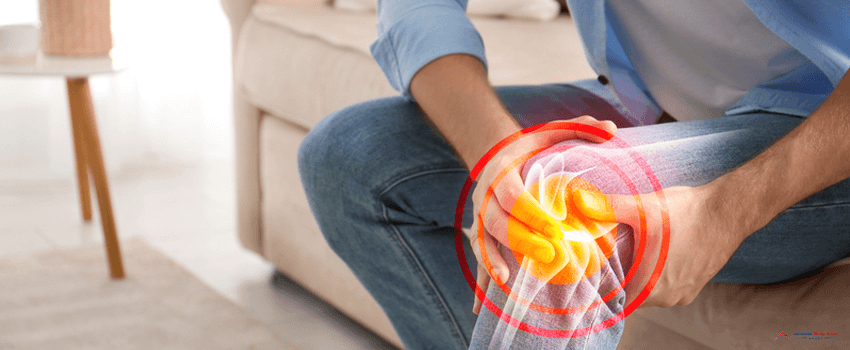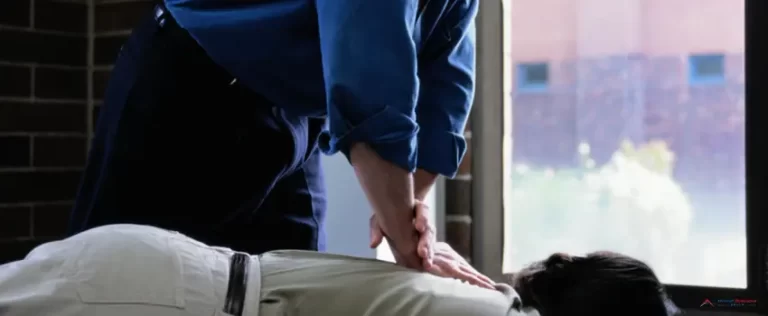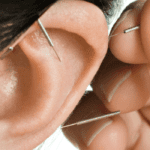Overworking your knee may lead to patellar tendonitis, also known as jumper’s knee. It can cause pain when you try to run, walk, or jump. It may also eventually end your career if you’re an athlete.
But, what is jumper’s knee, and what can you do about it?
What Is Jumper’s Knee?
The inflammation of the patellar tendon, which connects your tibia and kneecap, is called patellar tendonitis or jumper’s knee. Constant pressure and impact from sudden and frequent movements can put it under stress, weakening the tendon and eventually tearing it. It also means simple day-to-day activities like walking, kicking, and jumping can strain your knee and worsen the damage.
Athletes of high-intensity sports like football, volleyball, or basketball are often affected by jumper’s knee. These sports put a lot of pressure on the knees through high-intensity running and jumping, making athletes more susceptible to developing this condition.
Jumper’s knee recovery time may take six weeks, while physical therapy may take several weeks or months to complete.
Signs and Symptoms
Jumper’s knee is usually characterized by pain between your knee caps and the area where it attaches to your tibia or shin bone. You may initially feel pain during physical activities or after a workout. The pain worsens over time and interferes with your sport and everyday movements like climbing stairs, standing, or getting up from a chair.
Diagnosis
Doctors perform a jumper’s knee test by pressing on your knees during the exam to find where it hurts. Patellar tendinitis usually causes pain in the front of your knee below your kneecap. They may also order one or more of these imaging tests:
- Magnetic Resonance Imaging (MRI) – creates detailed images that show subtle changes in the patellar tendon
- Ultrasound – uses sound waves to create images of your knee, revealing any tears in your patellar tendon.
- X-ray – helps your doctor rule out other bone conditions that can also cause knee pain.
Jumper’s Knee: Treatment
How to fix jumper’s knee? Some of the ways jumper’s knee is treated include:
Rest
Overworking your knees is the likely cause of your jumper’s knee. Your doctor and chiropractor might ask you to stop doing any strenuous activity to allow your knees to heal. Allow your knees to rest for some time to reduce swelling and stress and tendon tears to heal.
Medications
Taking pain relievers like ibuprofen or naproxen may help provide short-term relief from pain.
Therapy
Some therapies and exercises that may reduce the symptoms of jumper’s knees include:
- Iontophoresis – This therapy involves applying corticosteroids to your skin, then using an electrical device to push the medication through your skin.
- Strengthening exercises – Tight thigh muscles can strain your patellar tendon. Jumper’s knee exercises that involve slowly lowering your leg after extending it are helpful, as well as exercises that use all the leg muscles, like a leg press.
- Stretching exercises – Consistent stretching before any activity reduces muscle spasms and lengthens the muscle-tendon unit. Don’t skip them.
- Patellar tendon strap – The strap applies pressure on the tendon to distribute the force it experiences, directing it to the strap and reducing pain.
Injections
Injecting corticosteroids and platelet-rich plasma may also treat jumper’s knees. An ultrasound-guided corticosteroids injections into the sheath surrounding the patellar tendon helps relieve pain. However, they weaken the tendon and increase its risk of rupturing.
Some people with chronic knee pain have tried platelet-rich plasma injections for their pain. Research is still ongoing, though, with researchers hoping these injections will promote tissue growth and heal tendon injuries.
Surgery
Surgery is the last resort to treating jumper’s knee. Your doctor may recommend the surgical removal of the damaged tendon areas while preserving healthy ones. Some procedures are done with small incisions around your affected knee.
How To Prevent Jumper’s Knee
Here are some ways you can reduce your chance of developing patellar tendonitis:
Strengthen your muscles.
Strong thigh muscles are better equipped to deal with the stress that leads to patellar tendinitis. Exercises help strengthen them by slowly lowering your leg after extending your knee.
Don’t play while in pain.
Don’t be a hero and play despite the pain. Ice your knee immediately after feeling pain. You should also avoid activities that stress your patellar tendon until your knee is free of pain.
Improve your technique.
Improving your technique also helps reduce the strain and pressure you place on your patellar tendon and makes your movements more efficient. Consider taking lessons when starting a new sport or trying out new exercises and equipment.
How Chiropractic Care Can Help
Adding chiropractic care to your treatment plan can help relieve knee pain without medications or invasive procedures like surgery. Chiropractors do this using:
Joint Manipulation
Joint manipulation is a non-invasive procedure that can help restore optimal motion in the affected area. It involves controlled pressure based on your joint’s needs. It is quick and painless, and it will prevent your patellar tendonitis from worsening.
Chiropractic Adjustments
Chiropractors may use adjustments like myofascial release (MYR) and soft tissue mobilization (STM) to treat your jumper’s knee and apply pressure on the affected area. This releases tissue restrictions and mobilizes your knees, reducing pain and restoring optimal flexibility and range of motion. These chiropractic adjustments will help you recover faster.
Massage Therapy
Chiropractors can use massage therapy to reduce the tightness in the surrounding muscles. It can help speed up your recovery by increasing blood circulation and strengthening your knees.
Cold Therapy
Cold therapy can reduce swelling in your knees. It involves wrapping your knees with cold gel or ice packs for approximately one to ten hours.
Taping
You or your chiropractor may also use jumper’s knee tape to support your tendon and relieve some of the strain. You wrap the tape around the patellar tendon just below the knee, compressing the patella tendon and changing its angle. This will then change where the tendon transmits the force, shifting the stress from the tendon’s painful part to another area.
Key Takeaway
Overworking your knees may lead to patellar tendonitis, or jumper’s knees characterized by swelling, pain, and limited movements. It may take a few weeks or months to heal but adding chiropractic care to your treatment plan helps helps shorten recovery time and decrease your reliance on pain medications.
Add chiropractic care from Advanced Chiropractors Group to your jumper’s knee treatment plan today.
Our partner chiropractors in Vail can help relieve your painful knee with chiropractic techniques. You won’t need to rely too much on medications and help you heal faster, allowing you to return to your sport quickly. Call us today, and we’ll connect them to you as soon as possible.








